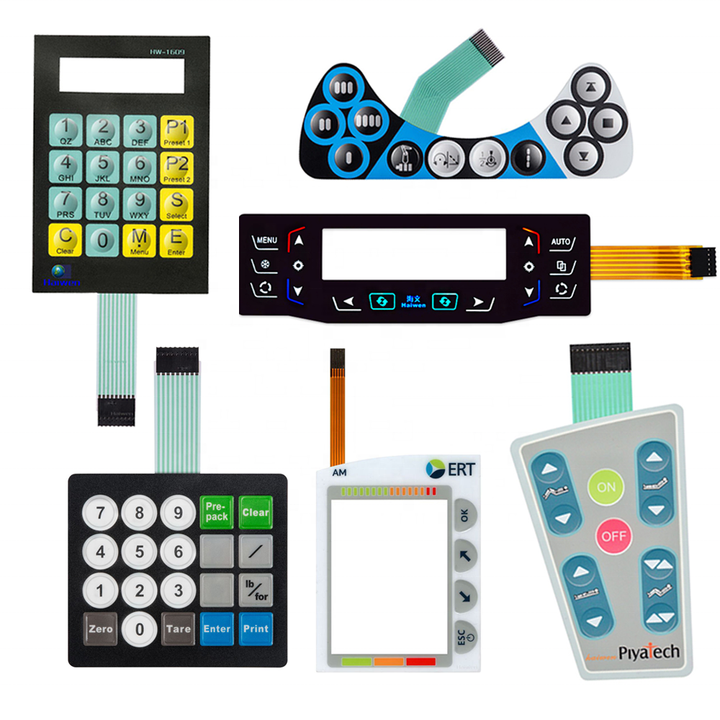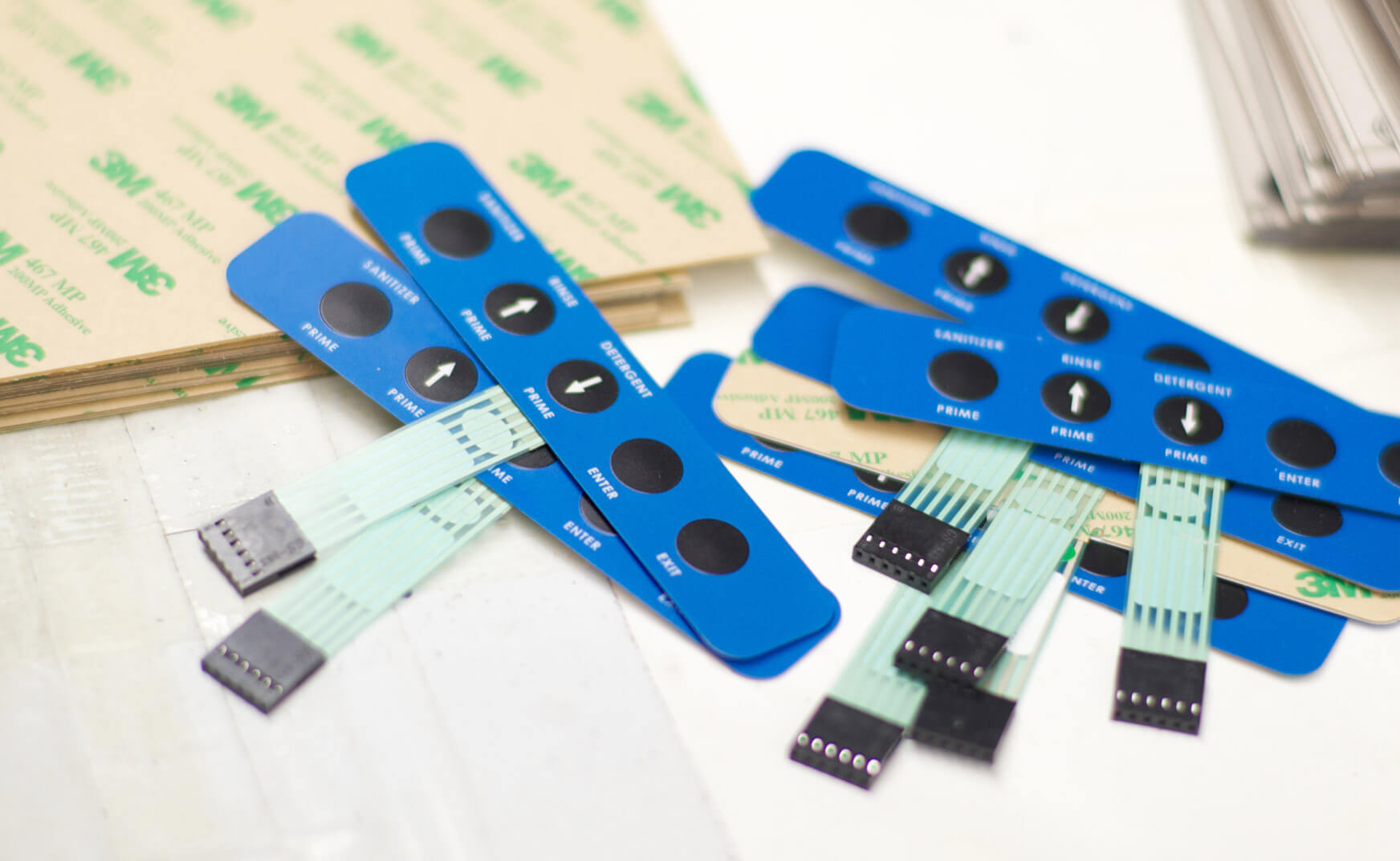Membrane Switches: A Cost-Effective Solution for Product Interfaces
Understanding the Relevance of Membrane Switches in Interface
Membrane switches are important components in the layout of efficient interface, assisting in not only performance but additionally enhancing visual appeal and individual interaction. Their special features, such as resistance to ecological factors and adjustable designs, make them suitable for a diverse selection of applications across numerous industries. As we check out the future fads and various advantages connected with Membrane innovation, it comes to be clear that these buttons are greater than just elements; they stand for a merging of innovation and functionality. The effects of this technology on user experience are worth checking out further.
What Are Membrane Switches?

The spacer layer, which includes glue residential properties, enables the splitting up of the circuit layer from the overlay, guaranteeing that the switch continues to be in a non-activated state until pressed. When stress is related to the overlay, it compresses the spacer layer, connecting the gap and completing the circuit in the underlying layer. This design not only decreases the physical area required for standard mechanical switches but additionally boosts the toughness of the gadget, as Membrane switches are generally immune to dirt, wetness, and various other environmental elements.
Typically located in applications ranging from customer electronics to medical tools, Membrane switches are integral to modern innovation, supplying a efficient and straightforward user interface that lines up with contemporary design demands.
Advantages of Membrane Switches
While various switch modern technologies exist, Membrane Switches deal distinctive benefits that make them particularly desirable in different applications. One of the primary advantages of Membrane buttons is their small layout, which permits space-saving implementations in tools where realty is limited. Their slim profile not only improves aesthetic charm however also helps with light-weight building.
Another significant benefit is their resistance to environmental variables. Membrane buttons are normally sealed against wetness, dirt, and impurities, making them excellent for usage popular environments, such as clinical gadgets and industrial tools. This toughness prolongs the life expectancy of the button, lowering maintenance costs and enhancing dependability.
Moreover, Membrane switches can be customized to fulfill details style requirements, integrating distinct graphics and colors that improve customer communication. Their tactile feedback choices can also be customized to give a satisfying individual experience. Additionally, Membrane switches are cost-efficient, especially in high-volume applications, as they can be created successfully.
Applications in Various Industries

In the customer electronic devices industry, Membrane buttons prevail in tools such as microwaves, washing makers, and push-button controls. Their responsive responses and visual alternatives boost user experience while giving a streamlined, modern look. Additionally, vehicle suppliers use Membrane switches in dashboard controls and infotainment systems, where space is restricted, and customer engagement is critical.
Furthermore, the commercial sector leverages Membrane buttons in control panels for Discover More equipment and equipment, enabling intuitive operation in frequently extreme settings. Their resistance to chemicals and dampness guarantees durability and find here dependability in these applications. In general, the versatility of Membrane Switches adds dramatically to their widespread usage, making them indispensable in different technological domains.
Layout Factors To Consider for Membrane Buttons

When designing Membrane buttons, numerous essential factors to consider must be taken right into account to ensure optimal functionality and individual experience. The selection of materials is critical; selecting long lasting, high-quality substratums can boost the button's durability and resistance to ecological elements such as dampness and temperature level variations.
Secondly, the style of the graphic overlay need to focus on clearness and convenience of usage. Symbols and text have to be understandable, and the layout ought to promote instinctive communication (membrane switches). Furthermore, responsive feedback is crucial; integrating a responsive dome or various other mechanisms can enhance the user experience by providing physical verification of activation
An additional important factor is the switch's electric performance. Designers have to make certain that the conductive traces are correctly made to lessen resistance and avoid signal interference. This involves assessing the required actuation pressure and guaranteeing compatibility with the digital components they will certainly user interface with.

Future Fads in Membrane Innovation
As modern technology remains to development, Membrane buttons are poised to advance considerably, driven by developments in products and making strategies. One emerging trend is the consolidation of innovative products, such as conductive inks and adaptable substrates, which improve resilience and lower the overall weight of Membrane buttons. These products not just enhance the tactile reaction however also allow for the layout of switches that can endure harsher environmental conditions.
Moreover, the assimilation of touch-sensitive modern technologies is changing typical Membrane Switches right into even more interactive user interfaces. Capacitive touch sensing units embedded within Membrane button panels can supply an extra instinctive and responsive user experience, straightening with the growing demand for streamlined, modern-day styles in consumer electronics.
Furthermore, improvements in printing techniques, such as electronic and 3D printing, make it possible for rapid prototyping and modification of Membrane switches. This versatility permits producers to respond quicker to market demands and consumer choices.
Lastly, sustainability is becoming a substantial emphasis, with suppliers checking out eco-friendly products and processes. As these trends unfold, the future of Membrane technology guarantees boosted functionality, visual appeal, and environmental duty, solidifying their role in innovative interface throughout numerous sectors.
Conclusion
In verdict, Membrane Switches represent an important part in the design of individual interfaces, integrating capability with visual adaptability. Their advantages, including resilience and resistance to ecological this article variables, make them appropriate for varied applications throughout different industries. Furthermore, thoughtful design factors to consider boost user interaction and experience. As innovations in technology continue, the evolution of Membrane buttons is expected to more refine individual interfaces, driving advancement and boosting use in a progressively complex technical landscape.
Membrane switches are integral parts in the design of efficient individual interfaces, helping with not only performance however additionally enhancing aesthetic charm and user communication.Membrane Switches serve as an important component in various user interfaces, facilitating a seamless interaction in between individuals and digital gadgets.While countless switch modern technologies exist, Membrane Switches deal unique advantages that make them especially desirable in numerous applications.Additionally, Membrane buttons can be personalized to meet certain layout demands, including special graphics and shades that boost user communication.In final thought, Membrane Switches stand for an important element in the layout of user interfaces, combining functionality with aesthetic adaptability.